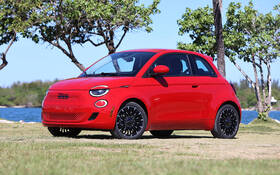2024 Fiat 500e: Moving On From Its Gas-Powered Predecessor
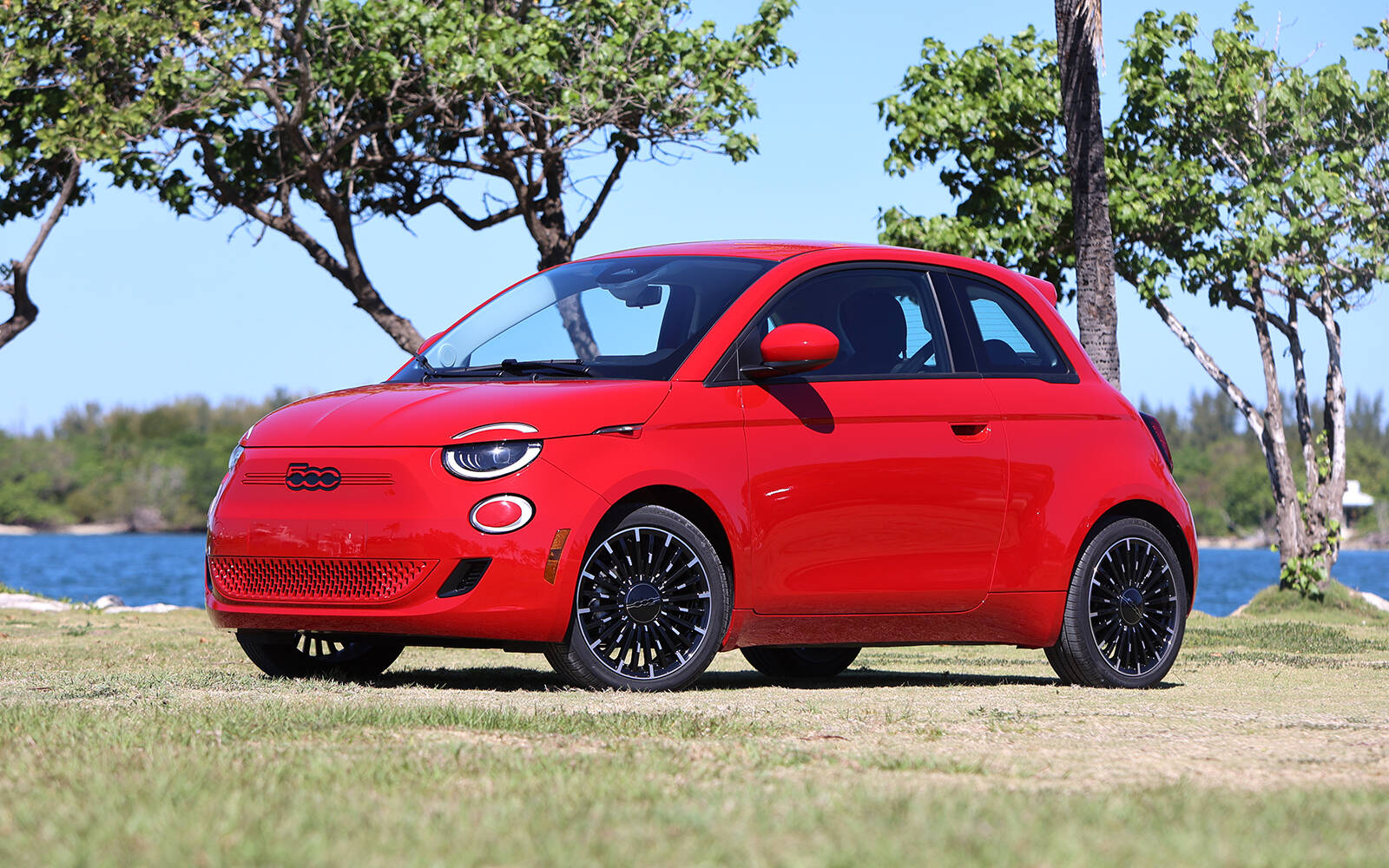
| Strong points |
|
|---|---|
| Weak points |
|
Fiat has been on life support for a number of years, at least in North America where sales are marginal. A mere 46 units were sold in all of Canada last year, 54 the year before and 79 two years ago. Today, only 38 Stellantis dealers still carry the Fiat brand.
Will the all-new 2024 Fiat 500e prove more successful? This fully electric variant of the little Italian hatchback has been around in Europe for nearly four years, where more than 185,000 units have found takers. Clearly, though, it wasn’t designed in the first place to make the jump across the Atlantic, considering the departed gas model’s poor reputation for dependability.
- Also: Canada’s New Cheapest EV Can Now Be Ordered Online
- Also: 2024 Fiat 500e Debuts as Cutesy, Affordable New EV
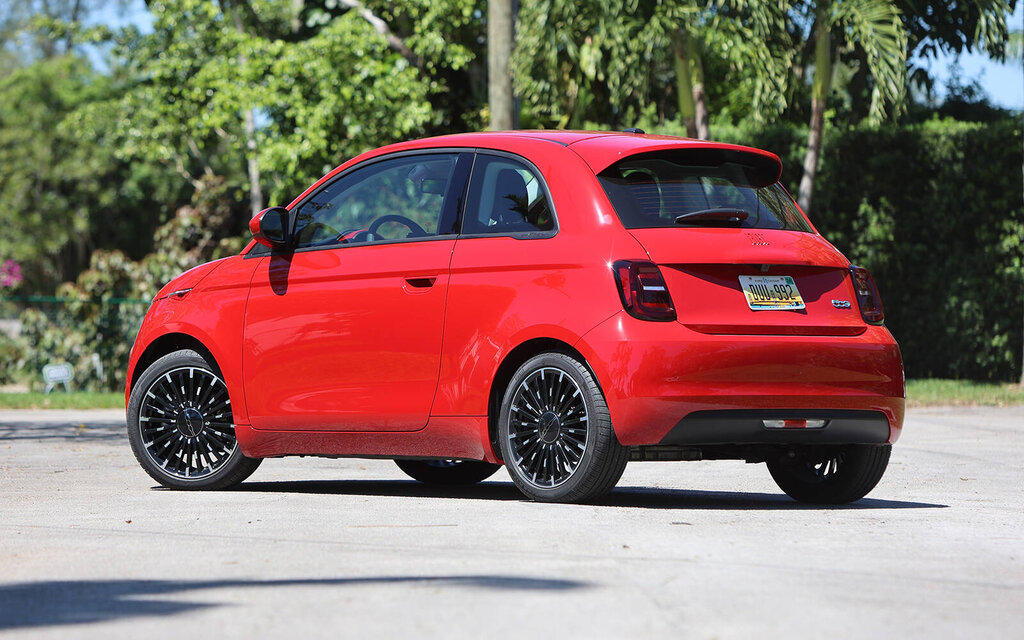
Why did Stellantis go through the trouble of homologating the 500e for North America? Mainly because it currently has no other EV in its large portfolio and needs to purchase expensive credits to keep selling ICE-powered vehicles. So, no, the automaker hasn’t suddenly found a new passion for small cars or faith in the Italian brand’s growth. It simply needs EVs, period. The Jeep Wagoneer S and Dodge Charger will both launch later this year, albeit in limited numbers and with double the price tag of the 500e, which happens to be the cheapest EV in Canada right now.
City Car Forever
At 3.6 metres long, the lovely Fiat is the smallest car you can buy. And despite its electric powertrain, it tips the scales at just 1,342 kg—approximately the same weight as a base Honda Civic, and 320 kg lighter than the late Chevrolet Bolt EV.
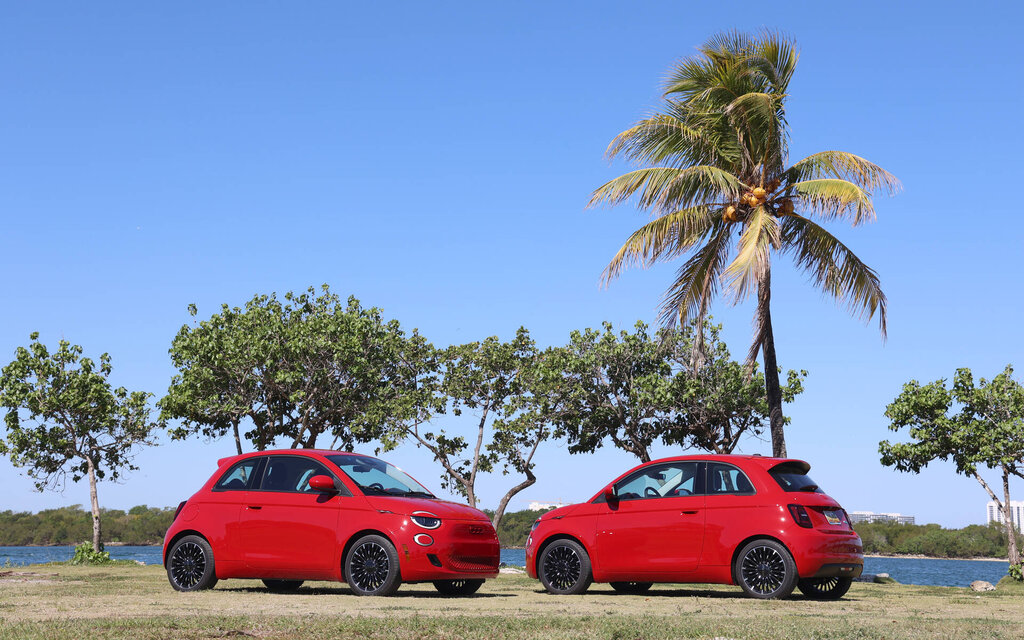
That’s because the battery that powers the 500e is 35 percent smaller than that of the Bolt EV, hence the much shorter range. Natural Resources Canada officially rates it at 227 km, which is still better than the Mazda MX-30 or MINI Cooper SE, but a deal breaker for many potential customers. Then again, most people won’t drive more than 50-75 km a day with the 500e.
The 42kWh pack can be charged to 80 percent in 35 minutes using a DC fast charger (max capability is 85 kW). With a level 2 charger at home, a full charge will take no more than 6 hours, which is pretty reasonable. Disappointingly, despite being lighter and relying on a modest 117-horsepower motor, the 500e consumes more energy (19 kWh/100 km) than the aforementioned Bolt EV (17.5 kWh/100 km).
In ideal conditions, we managed to record an average of 15.8 kWh/100 km with our test vehicle, which theoretically would enable a range of 265 km. On the other hand, you should expect around 150 km of range in really cold weather, especially in highway driving due to the car’s awful drag coefficient of 0.32. City streets are clearly where the 500e feels more at ease.
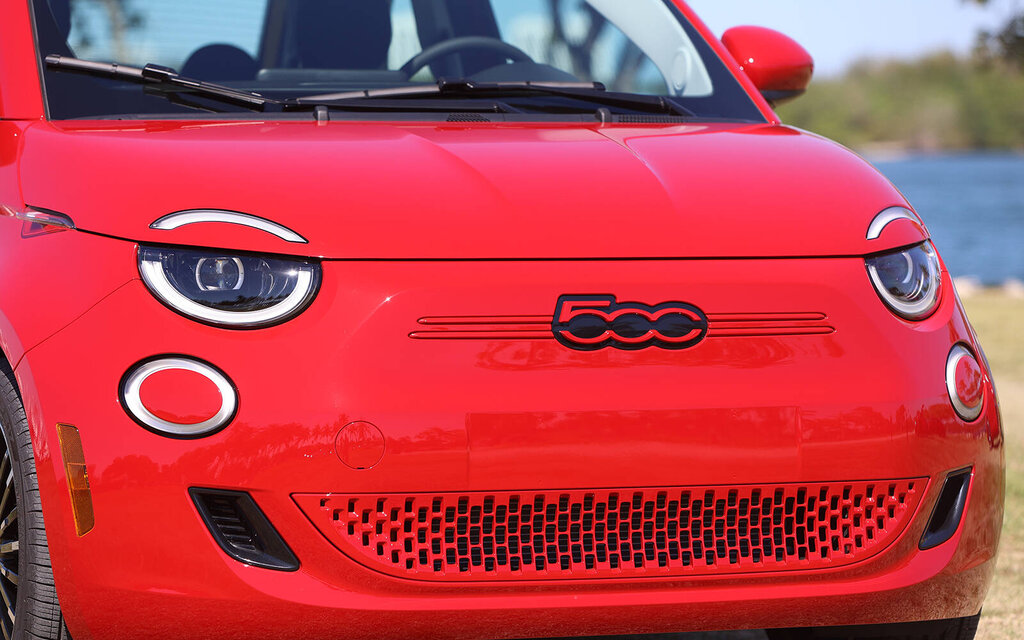
The ride is surprisingly smooth. Yes, the Fiat 500e is fairly basic, but the suspension does a fine job overall and build quality easily trumps the previous model. The car feels more comfortable than the Bolt EV even though the latter had 280 mm of extra wheelbase. Handling is remarkable, with the extremely short turning circle of 9.6 metres being the main highlight. If there’s one car that can turn on a dime, it’s this one.
Three drive modes are available, none of which is a Sport mode. When set to Normal, the 500e can be exploited to the fullest. Range enables one-pedal driving with optimized regenerative braking for squeezing a few more kms out of the battery, while Sherpa limits top speed to 80 km/h and reduces output to 77 horsepower to preserve energy. With that last mode, A/C stays off and you can’t use the heated seats or defroster.
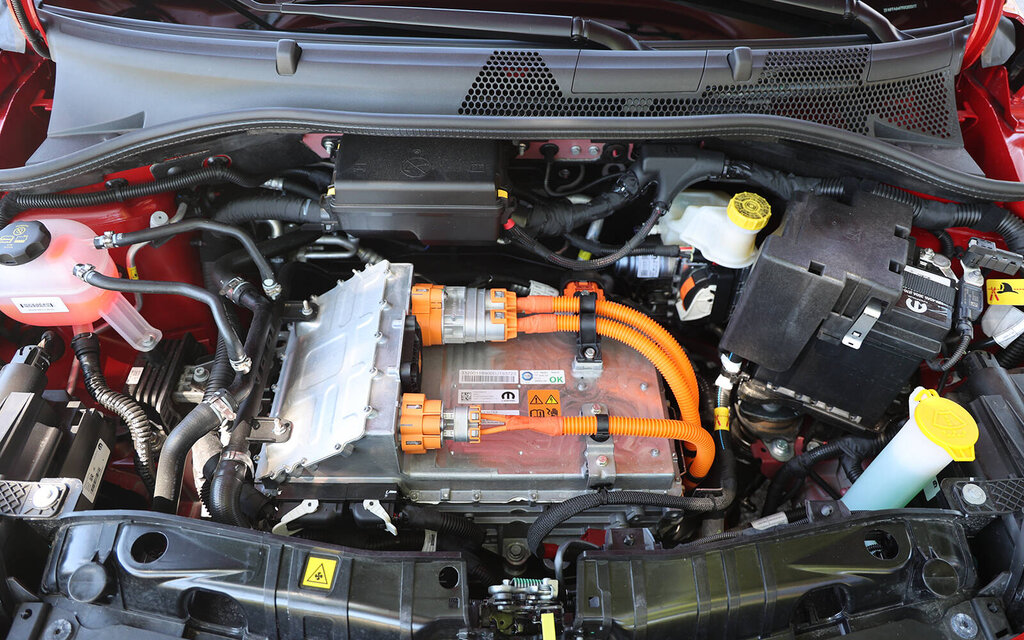
Thanks to the 162 lb-ft of torque, the Fiat 500e quickly accelerates from a standstill, making it easy to thread your way through traffic. The automaker says 0-50 km/h sprints can be done in just 3.1 seconds but fails to provide 0-100 km/h times. Regardless, driving is a lot of fun, with precise steering on top of sharp throttle response.
The driving position is much more pleasant than the one we used to have in the gas-powered 500, where it felt like you were perched on a stool. The seat is comfortable and shoulder room is vastly improved. The centre console with armrest also enhances comfort quite a bit.
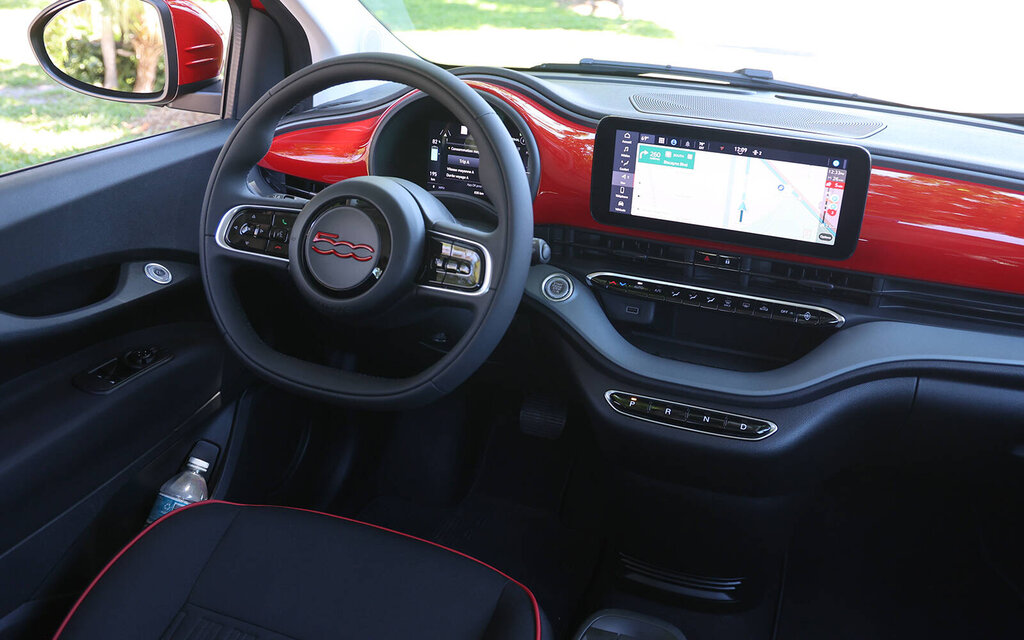
More Space, But…
While it does offer seating for four, the Fiat 500e isn’t very kind to rear passengers. Unless the people sitting in front sacrifice some space of their own, they’re not going to enjoy the drive. Truth be told, the rear seats should only be used in a pinch.
The base (500e)RED edition features quilted black fabric, while the La Prima edition offers elegant-looking leatherette in a beige finish. Both have a push-button gear selector, wireless smartphone charger and 10.25-inch touchscreen shared with the Alfa Romeo Tonale and Dodge Hornet.
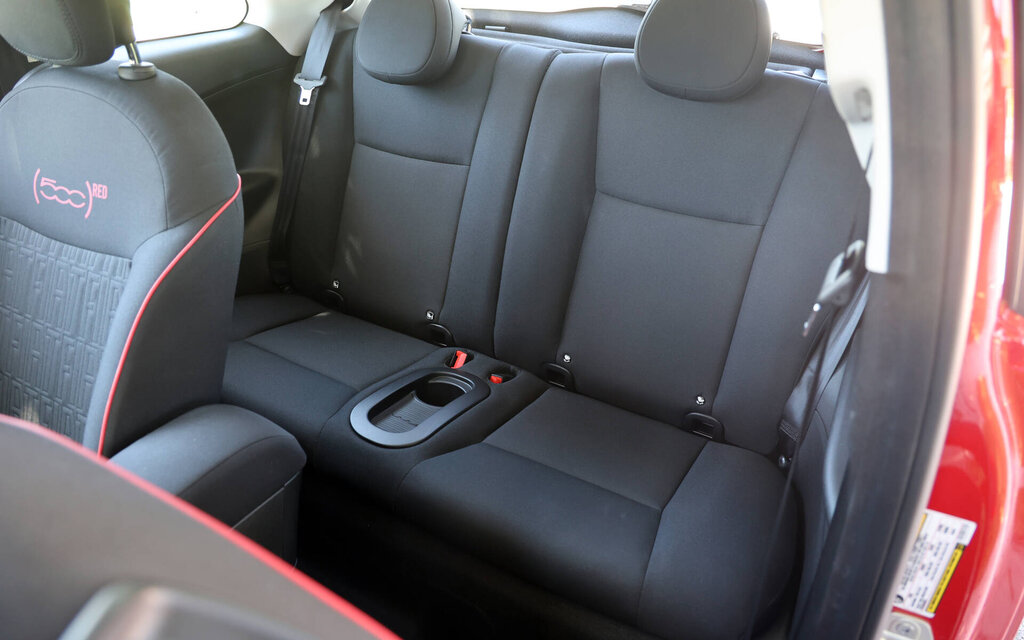
Modern tech such as navigation and wireless Apple CarPlay and Android Auto compatibility come standard, adding to a long list of features and amenities. We’re not sure that many people will select the more upscale and much more expensive 500e La Prima, even with nicer seats, more driving aids and a 7-speaker JBL audio system as part of the package. Oh, and an optional rose gold exterior.
Available in a red, white or black exterior, the (500e)RED should prove more popular among customers. Starting at $42,190 including freight and PDI, it’s also $5,000 cheaper. By the way, sales for 2024 are limited to Quebec and B.C, where EV adoption is stronger. Other provinces will follow in 2025 as production ramps up.

What will the response be like, knowing Fiat’s bad reputation for reliability? That’s a great question. As it stands, the Fiat 500e is a pleasant surprise and a fun new option in a market that finds ways to eliminate them. Maybe that’s exactly what some people were waiting for.


